DAILY BEST KNOWLEDGE
7 Ancient Civilizations That Changed the World
Discover how ancient civilizations shaped the world with their innovations in writing, law, and architecture. Explore the historical impact of Mesopotamia, Egypt, China, Greece, Rome, the Indus Valley, and the Maya, and learn why these ancient civilizations remain so influential today.
HISTORY
Iftikhar Ishaque Memon
10/21/20256 min read
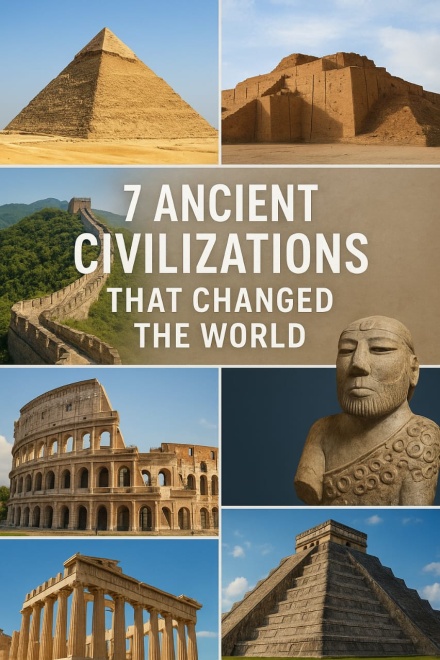

Introduction
The impact of ancient civilizations on the "human trajectory" is significant. These individuals were the pioneers of the modern world in terms of their advancements in governance, culture, technology, and social organization. These civilizations were not simply “resilient” in that they were able to withstand the “test of time,” but had a shaping force on myriad generations after them. A look at seven of the greatest civilizations of the ancient world reveals how human beings and their capabilities transformed the world. The specific innovations that emerged from Mesopotamia, Ancient Egypt, the Indus Valley, Ancient China, Ancient Greece, Rome, and the Maya civilization are explored in this article.
1. Mesopotamian Civilization: The Cradle of Civilization
For many, Mesopotamia, the “Land between the rivers,” fertile territory between the Tigris and Euphrates rivers that constitute modern-day Iraq and sections of Syria and Turkey, is recognized as the original “Cradle of Civilization.” Developing from nomadic to sedentary communities around 3500 B.C.E., it had some of the first cities and complex societies. Sumerians, Akkadians, Babylonians, and Assyrians are the most important of them.
Writing and Record-Keeping
Perhaps Mesopotamia’s most lasting contributions were the development of cuneiform writing, thought to be the first writing system in the world. Though originally a means of preserving documentation and trade, cuneiform later expanded to include literature, law, and science. This civilization produced one of the oldest known literary texts, the “Epic of Gilgamesh.”
Legal and Political Innovations
In 1754 BC, the Code of Hammurabi was the oldest and most complete legal code. It created laws and punishments for violating society’s customs, and this law would shape the laws of the world. The political–religious balance had also been adopted by city-states in Mesopotamia.
Advances in Agriculture and Urban Planning
Mesopotamians learned how to use their complex flooding environments for farming. They had walled cities with temples, called ziggurats, and marketplaces, which remain the model marks for the future.
Learn more about Mesopotamia’s legacy on Ancient History Encyclopedia.
2. Ancient Egyptian Civilization: Masters of the Nile
Ancient Egypt flourished for over 3,000 years along the banks of the Nile River, from around 3100 BCE to 30 BCE. It is renowned for its monumental architecture, religious beliefs, and contributions to science and art.
Architectural Marvels and Engineering
The Egyptians built the pyramids, the utmost well-known of which is the Great Pyramid of Giza, one of the Seven Wonders of the Ancient World. These structures required a great understanding of math, geometry, and engineering. Their talents as architects are also evident in the Sphinx, the temples, and the tombs.
Writing and Knowledge
Hieroglyphics were the complicated writing system used by the Egyptians, consisting of logos as well as some alphabet letters. They produced religious texts, administrative documents, and scientific knowledge in their own writing. Paper, in the form of papyrus, was developed for writing.
Medicine and Astronomy
Egyptian medicine, specifically surgical practices and knowledge of the body’s anatomy, was quite sophisticated for its time. They also learned astronomy for the purpose of developing calendars to mark agricultural and religious occurrences.
The Nile’s predictable flooding cycles allowed Egypt to thrive agriculturally, making it one of the most stable ancient civilizations.
3. Indus Valley Civilization: Urban Innovators
The Indus Valley Civilization, similarly known as the Harappan Civilization, flourished from approximately 2500 BCE to 1900 BCE in what is now Pakistan and northwest India. It was one of the world’s earliest urban cultures.
Urban Planning and Infrastructure
Cities such as Mohenjo-Daro and Harappa displayed notable feats of carpentry, urban planning, including grids and multi storied buildings, and elaborate drainage systems. Their sanitation system, with its covered drains and public baths, was ahead of its time.
Trade and Economy
The Indus civilization traded extensively both with itself as well as with Mesopotamia and beyond. They also had standardized weights and measures for commerce and economy.
Writing and Mystery
The Indus script remains undecipherable; archaeological findings indicate a complex society that appears to possess some form of governance, social stratification, and organization. They are skilled artisans at creating beads, pottery, and metalwork.
4. Ancient Chinese Civilization: Innovators of the East
Ancient China, with a history stretching back over 4,000 years, is one of the world’s oldest continuous civilizations. It made groundbreaking contributions in technology, philosophy, and governance.
Inventions That Changed the World
China is credited with significant contributions, including the inventions of paper, gunpowder, the compass, and printing technology, innovations that had a profound impact globally. These inventions facilitated communication, exploration, and war.
Dynastic Rule and Philosophy
China’s early centralized forms of government can be seen from the Shang and Zhou dynasties, which also set the stage for the concept of the Mandate of Heaven to justify its rulers. Philosophies such as Confucianism and Taoism developed and would guide Chinese society and governance for thousands of years.
The Great Wall and Silk Road
China’s Great Wall, founded as a defense against invasions, is an icon of Chinese engineering. Cultural and economic exchange occurred between Europe and the Middle East through the Silk Road trade network into China.
5. Ancient Greek Civilization: Birthplace of Western Thought
Ancient Greece, flourishing between the 8th century BCE and the Roman conquest, laid the intellectual and cultural foundations of Western civilization.
Democracy and Political Thought
Athens instituted a form of democracy in which direct participation in decision-making by citizens was the hallmark. This system was a model for democratic governments around the world.
Philosophy and Science
Socrates, Plato, and Aristotle pondered questions of ethics, metaphysics, and politics, which are the foundations of Western philosophy. Greek contributions to mathematics, astronomy, and medicine marked the later development of science.
Arts and Sports
Greek architecture, sculpture, and drama set the standard for art that is still widely held today. Originally from Greece, the Olympic Games marked achievements in athletics and unity among city-states.
6. Roman Civilization: Architects of Empire
The Roman Empire, which lasted from 27 BCE to 476 CE in the West and until 1453 CE in the East (Byzantine Empire), was a powerhouse of law, engineering, and governance.
Legal Legacy
Roman law introduced concepts like "innocent until proven guilty" and codified legal principles that underpin many modern legal systems.
Engineering and Infrastructure
The Romans built massive road networks, aqueducts, amphitheaters, and public baths in many ways. Architects also used concrete and the arch, which made it possible to build large scale.
Language and Culture
Latin was the Roman language, evolved into the Romance languages (Spanish, French, Italian, Portuguese, Romanian), and influenced English vocabulary. Roman culture and Greek tradition combined to form Western art, literature, and religion.
7. Maya Civilization: Masters of Time and Astronomy
The Maya civilization thrived in present-day Mexico, Guatemala, Belize, and Honduras from about 2000 BCE until the Spanish conquest in the 16th century.
Mathematical and Astronomical Achievements
The Maya established a sophisticated calendar system based on astronomical observations. They knew the concept of zero and used base-20 mathematics of advanced age.
Writing and Architecture
There are many major glyph of Maya hieroglyphics found in the pre-Colombian Americas. They built imposing city-states with pyramids, palaces, and observatories based upon their scientific knowledge.
Cultural Legacy
The Maya made lasting contributions to art, mythology, and religion, many of which continue to influence indigenous cultures today.
Conclusion
The seven ancient civilizations discussed—Mesopotamian, Egyptian, Indus Valley, Chinese, Greek, Roman, and Maya— had an important impact on human history. Their writing, governance, science, art, and architecture were the foundation for modern society. In exploring their accomplishment, we will not just honor their legacy, but learn from them how to innovate, survive, and work forward. This civilization reminds us that human potential has always been infinite, and their stories remain an inspiration for the world.
Frequently Asked Questions (FAQs)
Q1: Which ancient civilization first invented writing?
A: The Mesopotamian civilization invented the earliest recognized writing method, cuneiform, about 3200 BCE.
Q2: What was the Indus Valley Civilization’s significance?
A: It was one of the first urban cultures that made city planning, sanitation, and trade networks more advanced.
Q3: How did ancient Greece bring democracy to modern democracy?
A: Ancient Greece, especially at times Athens, made the concept of democracy, with citizens participating in government decisions that had an impact on modern democratic institutions.
Q4: What were some significant inventions of Ancient China?
A: Paper, gunpowder, the compass, and printing are some of Ancient China‘s most important inventions.
Q5: Why is the Roman legal system important today?
A Rome law introduced fundamental legal principles that remain today, and hold in place many modern legal systems worldwide.
For information about Industrial Revolution, Visit https://www.dailybestknowledge.online/6-greatest-inventions-of-the-industrial-revolution
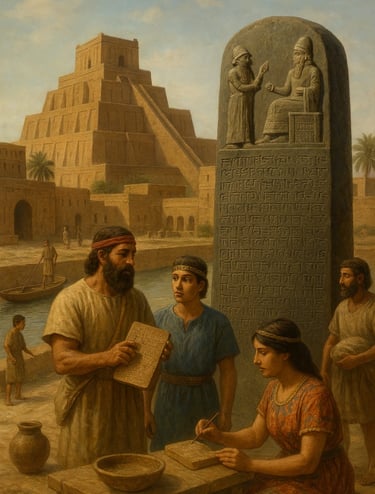

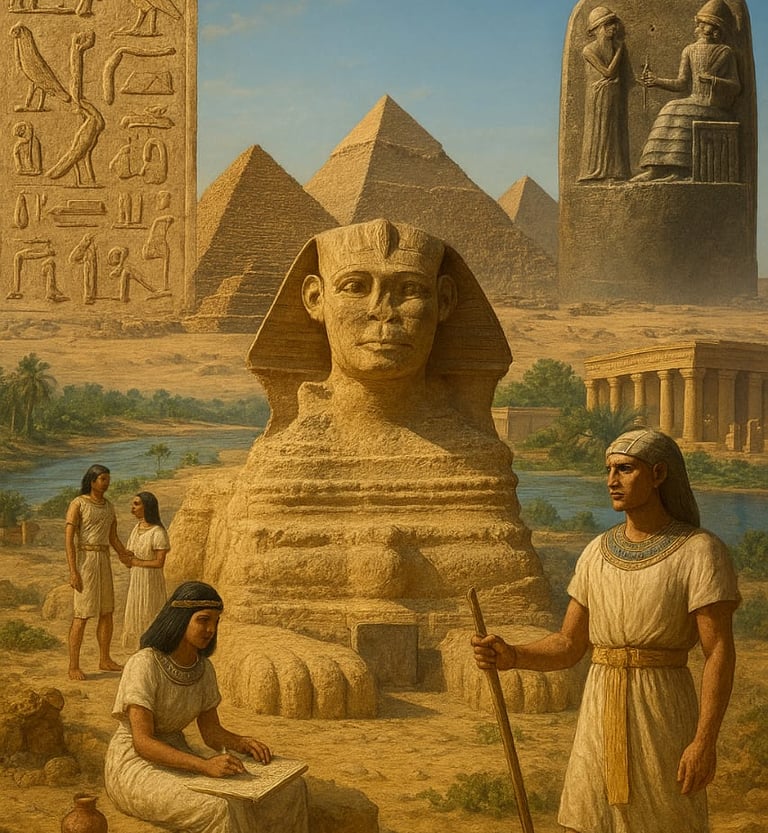

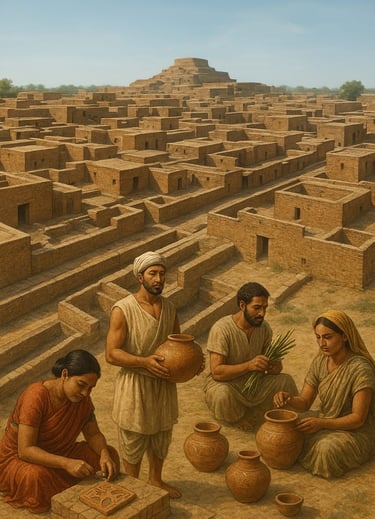

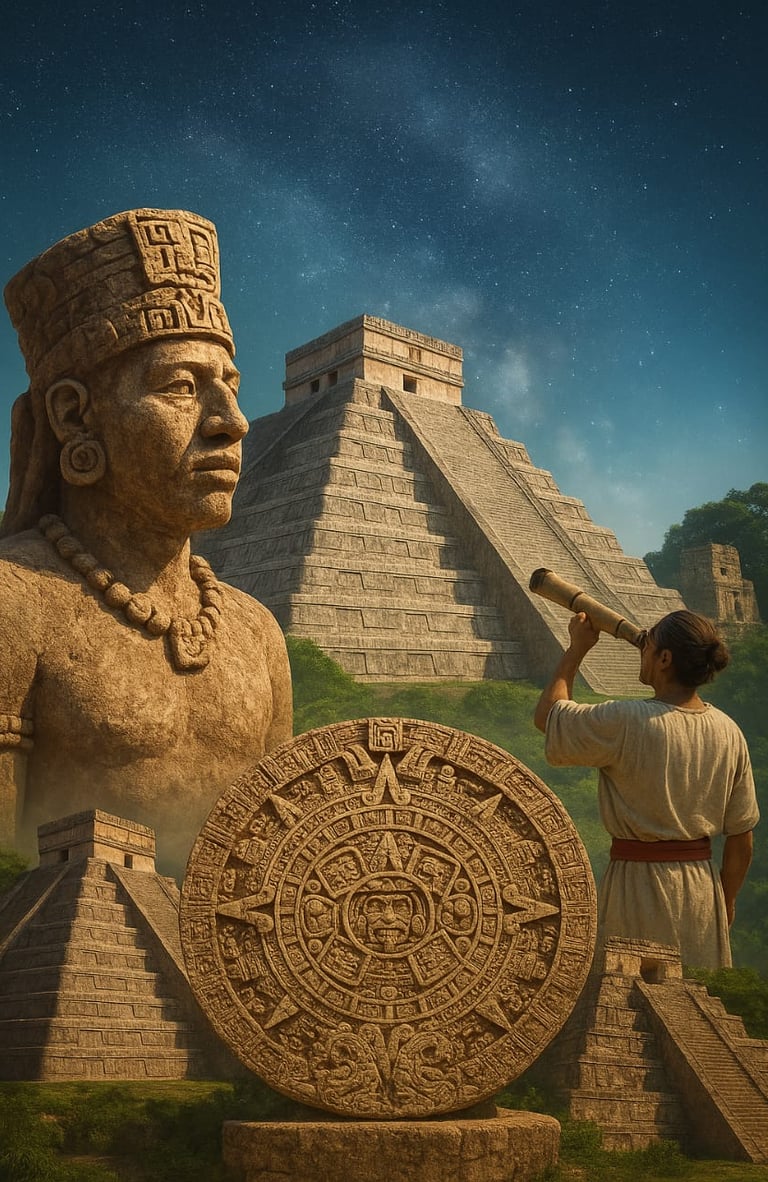

© 2025. All rights reserved.
This platform delivers well-researched articles to empower your personal and professional life.


